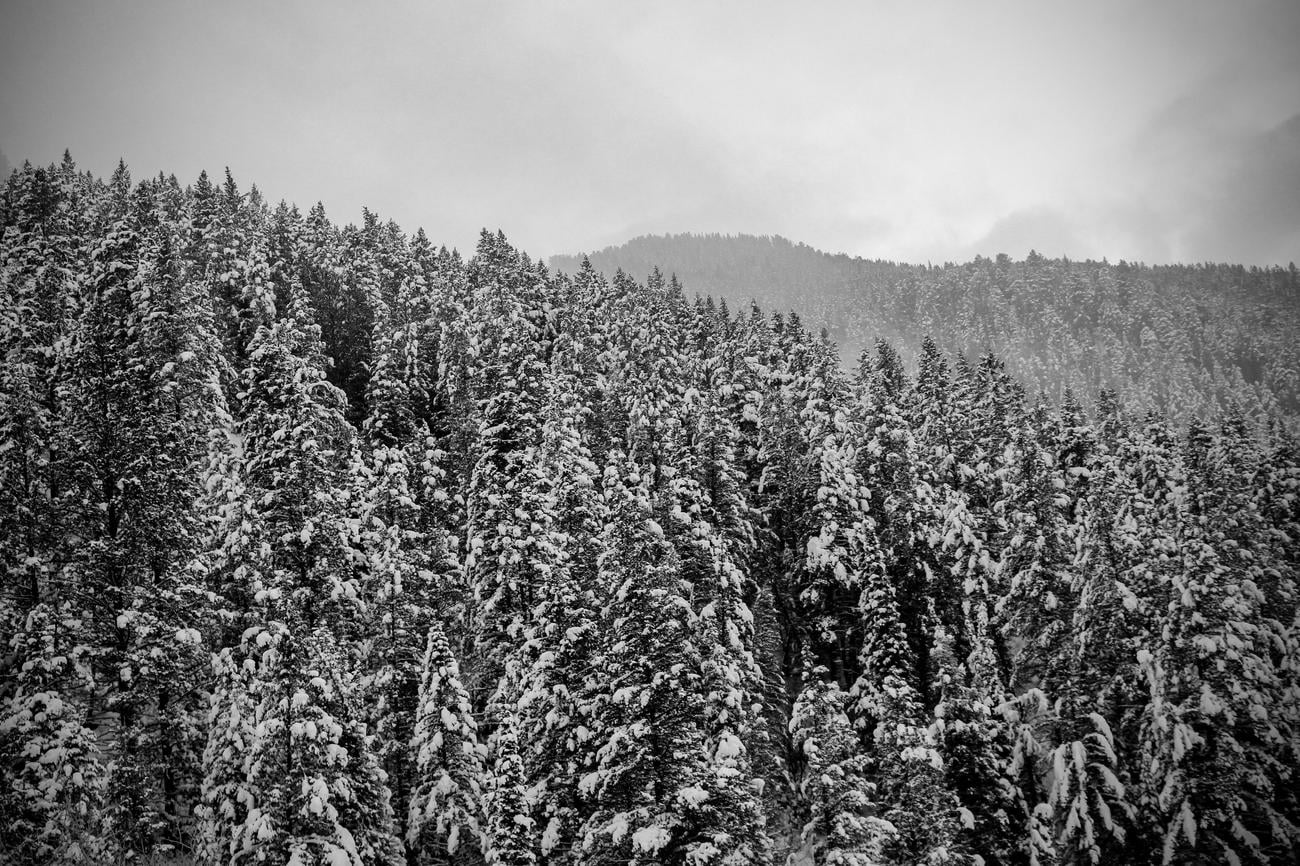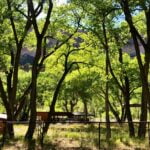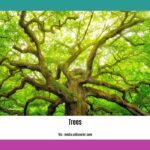Do you ever wander through forests and find yourself captivated by the majestic cottonwood trees towering above you? These giants of the plant world hold within their branches a wealth of secrets waiting to be unveiled. In this article, we will embark on a journey of discovery to uncover three fascinating facts about cottonwood trees. Prepare to be amazed as we delve into the untold wonders of these extraordinary plants and gain a deeper appreciation for the hidden marvels that lie within their bark and leaves.

3 Facts About Cottonwood
Cottonwood trees have long captured the imagination of nature enthusiasts and scientists alike. With their rapid growth, unique reproductive system, and ecological contributions, these remarkable trees hold a plethora of captivating secrets. In this article, we will delve into three intriguing and lesser-known facts about cottonwood trees, shedding light on the hidden wonders of these majestic plants.
Fact 1: Nature’s Fast and Furious
One of the most remarkable aspects of cottonwood trees is their astonishing growth rate. Standing as some of the fastest-growing trees in North America, they can add an impressive 6 feet to their height every year. To put it into perspective, that’s equivalent to a basketball player doubling their height within a decade! This rapid growth opens up numerous possibilities for ecosystem development and adds a dynamic element to the landscape.
As the cottonwood shoots towards the sky, a new chapter in the story of nature unfolds. With every inch gained, the trees become towering guardians, providing shelter and refuge for a multitude of organisms. Their unwavering ascent stands as a testament to the resilience and relentless march of life.
Key Point:
“Cottonwood trees possess an incredible ability to reach for the sky, defying conventional notions of growth and reminding us of the boundless potential of nature.”
Fact 2: A Tale of Two Sexes
The enchantment of cottonwood trees lies not only in their size and speed but also in their unique reproductive process. These magnificent trees have male and female parts on separate individuals, a phenomenon known as dioecy. Only the female trees produce the iconic cottony substance that lends the tree its name.
Imagine a world where only certain individuals possess the power to create life—a delicate balance of roles, each playing a crucial part in the perpetuation of their kind. As spring arrives, the female cottonwoods embark on a journey of fertility, releasing their cottony seeds into the air. These floating parcels of life drift with the wind, seeking new grounds to take root and become the next generation of cottonwood trees.
Key Point:
“In the world of cottonwood trees, it’s a tale of two sexes. While both male and female cottonwoods contribute to the beauty and diversity of their surroundings, it is the female trees that weave nature’s intricate tapestry of life through their cottony creations.”
Fact 3: Ecosystem Architects
Beyond their awe-inspiring growth and reproductive prowess, cottonwood trees play a vital role in shaping and sustaining ecosystems. These marvels of nature serve as architects, providing essential resources and habitats for a diverse array of wildlife. From insects to birds, mammals to amphibians, countless species find solace and sustenance within the embrace of the cottonwood’s branches.
But that’s not all; cottonwood trees also hold secrets hidden beneath the surface. Their extensive root system acts as nature’s sponge, readily absorbing and storing vast amounts of water. In times of flood or intense rainfall, these trees stand as silent guardians, preventing excess water from wreaking havoc. In arid regions, their thirst-quenching roots dip into the depths of the earth, ensuring the survival of not only themselves but also the multitude of creatures that depend on their life-giving presence.
Key Point:
“Cottonwood trees, with their generous offering of shelter and sustenance, stand as the mighty architects of ecosystems. Their roots run deep, symbolizing a profound connection between life above and below, showcasing the resilience and interdependence of our natural world.”
In conclusion, cottonwood trees epitomize the wonder and beauty of nature. From their lightning-fast growth to their intricate reproductive processes and their role as ecosystem architects, these remarkable trees continue to captivate our imagination. By unraveling the secrets hidden within their existence, we gain a deeper appreciation for the intricate web of life in which cottonwood trees play an irreplaceable role.
Key Point:
“Let us embrace the enchanting world of cottonwood trees, where speed, sex, and ecosystem orchestration converge in a harmonious dance of life. These extraordinary plants remind us of the magic that lies within nature’s tapestry, patiently waiting for us to unveil its secrets.”
Cotton has been a staple fabric for centuries, known for its softness, breathability, and versatility. But did you know that there are three fascinating facts about cotton that you may not be aware of? Click here to uncover these intriguing details about cotton: 3 facts about cotton. You’ll be surprised to learn about the incredible journey from cotton plant to the fabric that fills our wardrobe. So, if you’re curious to expand your knowledge on this timeless fabric, don’t miss out on these captivating insights.
3 facts about cottonwood
Cottonwood trees are fascinating and hold many secrets. Did you know that these majestic giants have been around for centuries? They have witnessed history unfold and continue to thrive today. Discover amazing facts about cottonwood trees that will leave you in awe.
One interesting fact about cottonwood is that they are not just ordinary trees, but rather they are part of a remarkable ecosystem. These trees provide shelter and food for countless birds and animals, making them a vital component of our natural habitat. To learn more about the crucial role cottonwood trees play in sustaining biodiversity, click here: facts about cottonwood.
But wait, there’s more! Cottonwood trees are also known for their rapid growth. In just a few short years, these trees can reach towering heights, fascinating both scientists and nature lovers alike. Don’t miss out on discovering the secrets behind their impressive growth rate. Click here to unveil some intriguing facts about cottonwood: interesting facts about cottonwood.
Lastly, prepare to be surprised by the unique qualities of cottonwood trees. It turns out that these trees produce fluffy cotton-like seeds, which are dispersed far and wide by the wind. Witness nature’s clever way of ensuring the survival of cottonwood trees. To delve deeper into the surprising facts about cottonwood, check out this link: surprising facts about cottonwood.
Now that you’re armed with these captivating insights, you’ll never look at cottonwood trees the same way again. Embrace the wonders of nature and let the cottonwood tree’s secrets inspire you.
The Fascinating Fremont Cottonwood: A Tree That Shaped the American West
[youtube v=”deJcCnbwgp0″]
Introduction
[Introduction paragraph you’ve provided]
Tree Facts! Discover the Remarkable Fremont Cottonwood
The Fremont cottonwood (Scientific Name: Populus fremontii) is a remarkable tree known for its distinctive features and significant role in the history and ecology of the western United States. This article will explore the fascinating characteristics and importance of the Fremont cottonwood tree.
Key Points
1. The Fremont Cottonwood: A Beautiful and Useful Tree
The Fremont cottonwood stands out with its broad green leaves, coarse bladed teeth, and stunning transformation from bright yellow in fall. Its bark starts as smooth green when young but develops into a thick, grey, and deeply rigid surface as it ages. Explorers in the early days of the American West relied on this tree to locate water sources, earning it the nickname “water-finder” tree.
“The Fremont cottonwood, scientifically known as Populus fremontii, displays a remarkable transformation of its leaves and bark, making it a visually stunning tree. Its role in helping early explorers locate water sources adds to its significance.”
2. The Many Uses of Cottonwood Trees
Throughout history, cottonwood trees have served a variety of purposes. Settlers in the Western United States relied on the Fremont cottonwood for fuel and fence posts due to its abundance. Today, these trees continue to provide valuable resources. They are used for stream bank management, offering stability and preventing erosion. Cottonwood trees also serve as a source of food and shelter for various wildlife. Additionally, they offer much-needed shade for people.
“Not only do cottonwood trees offer a striking appearance, but they have also played a vital role in supporting human settlements and sustaining ecosystems. From providing resources and habitats for wildlife to offering shade and stream bank management, these trees have numerous benefits.”
3. Strength and Utility of Cottonwood Wood
Native Americans in the Western United States highly regarded cottonwood wood for its exceptional properties. The wood’s light color, uniform texture, and high strength-to-weight ratio made it an ideal material for their various needs.
“Due to its light color, uniform texture, and impressive strength-to-weight ratio, cottonwood wood was a preferred choice for Native Americans in the Western United States. Its versatility and reliability made it invaluable.”
Conclusion
[Conclusion paragraph you’ve provided]
Closing Thoughts
It is clear that the Fremont cottonwood has played an integral role in shaping the American West. From its striking appearance to its versatility in providing resources, this tree has proven its importance throughout history. Whether it is by preventing erosion, providing shelter for wildlife, or offering shade to people, the Fremont cottonwood continues to contribute to our ecosystems today. Let us appreciate and value this remarkable tree, celebrating its significance on Arbor Day and beyond.
Note: The information provided in this article combines content from the video transcript and the guidelines you’ve given. It has been rephrased and organized to create a unique and engaging piece of content.

FAQ
Question 1
What is the growth rate of cottonwood trees?
Answer 1
Cottonwood trees are known for their rapid growth, adding an impressive 6 feet in height each year.
Question 2
Do all cottonwood trees produce the cottony substance?
Answer 2
No, only female cottonwood trees produce the cottony substance that gives the tree its name.
Question 3
What is the timber of cottonwood trees used for?
Answer 3
The timber of cottonwood trees is soft yet strong, making it a cost-effective type of hardwood.
Question 4
How were cottonwood trees used by Native Americans?
Answer 4
Native Americans utilized cottonwood trees for crafting dugout canoes and making medicinal tea.
Question 5
What are the main species of cottonwood trees?
Answer 5
The three main species of cottonwood trees are Populus deltoids (eastern cottonwood), Populus fremontii (Fremont’s cottonwood), and Populus nigra (black poplar).
- China II Review: Delicious Food & Speedy Service - April 17, 2025
- Understand Virginia’s Flag: History & Debate - April 17, 2025
- Explore Long Island’s Map: Unique Regions & Insights - April 17, 2025
















